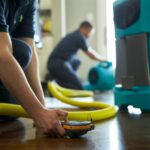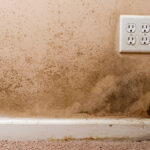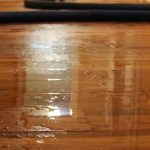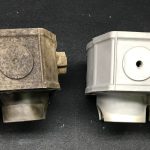3 THINGS YOU NEED TO KNOW WHEN DRYING OUT WATER DAMAGE 3 THINGS YOU NEED TO KNOW.
After your business experiences water damage from a leaky pipe, rainstorm or flood, you naturally want to get things back to normal as soon as possible.
If you’re dealing with anything other than a large incursion, you understandably may be considering handling the cleanup and drying yourself to save money or time. The problem is that cleaning up and recovering from water damage isn’t always as straightforward as it seems. This post highlights 3 key things you need to be aware of when addressing water damage from minor clean water (or Category 1) incursion.
1) Know What You’re Dealing With
If you read our recent post on understanding the risks of water damage, then you know that water damage can be caused by three different types of water, including:
Clean water (Category I)
Gray water (Category 2)
Black water (Category 3)
It’s important to understand the differences because Category 2 and Category 3 water present health risks to your employees and customers and need to be handled differently. The most likely sources of clean water would be water from a pipe, water heater, steam lines or even rainwater. The basic rule of thumb is that it should look and smell like tap water.
Recovering from Category 2 or Category 3 water damage or heavy flooding involves additional considerations that we won’t go into in this post, but you can read about in our Quick Guide to Water Damage.
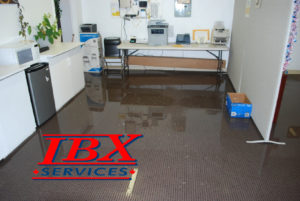
2) Make Sure You Investigate All of the Damage
The challenging thing about recovering from water damage from something like a broken pipe or rainwater incursion is that you can typically only see a small part of the actual damage. The majority of the moisture is often hidden in walls, and it’s critical to identify and dry all of the affected areas to prevent mold.
The methods for dealing with damage to walls depend on the type of materials and also what’s behind those materials. Drywall can often be salvaged when you respond quickly to damage. You can purchase moisture meters that allow you to assess structural integrity. If the integrity checks out then your drying approach will depend on wall contents. If the wall has insulation, you will need to use flood cuts. If there is no insulation, then usually the best method is to create weep holes. And if you’re dealing with a firewall, you’ll want to use staggered cuts.
You’ll also want to pull and check your base molding and flooring materials. If you the floors are carpet, you may be able to pull back the wet area and dry it (and the flooring materials with a fan).
3) Establish Proper Airflow and Keep the Windows Closed When Drying
Once you discover moisture, your first instinct may be to open windows to help with the drying process, but it may not be your best move. For example, if your building is mechanically ventilated, the systems need constant pressure levels to work correctly. You also want to avoid excess coolness or heat and humidity, or you may end up complicating the drying process.
Once you’ve pulled away wet materials and established holes or cuts in the wall as needed, you’ll typically need one air mover for every 15 – 25 square feet of floor, unless the moisture load and density is particularly high, then you may need more. To prevent mold, make sure all of the layers and materials are dry before putting everything back together.
The Big Dry Out
If you’ve experienced water damage, hopefully, you’re dealing with clean water and a small area. No matter what type of water damage you’re dealing with, if you want more information about recovery, this guide is a great starting point. And if you have any additional questions or need help, don’t hesitate to call us.




